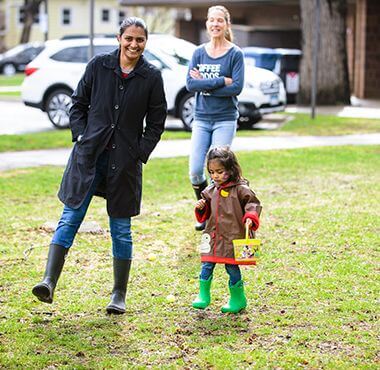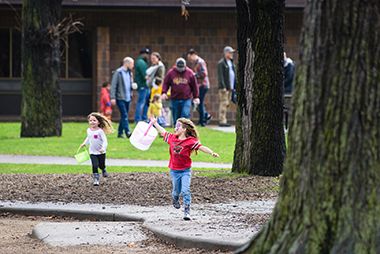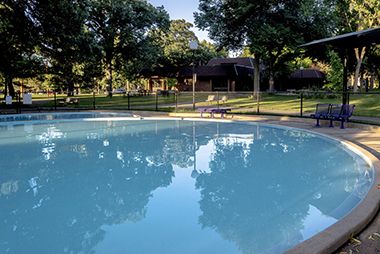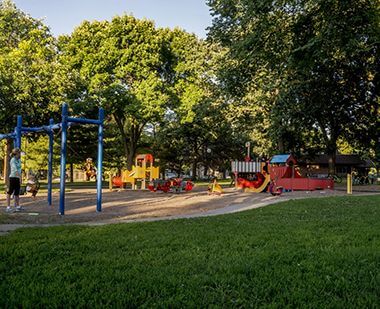Address
3100 W 43rd St.
Minneapolis, MN 55410
Plan Your Route
Contact
Phone: 612-370-4913 Email: info@minneapolisparks.org
Park Hours
6 am–midnight
Ordinance PB-2-33
Wading Pool Information
Ice Rink Information
Go to the ice rinks page for details on daily hours, dates for the current season, daily status and temporary closures, a full list of locations and more.Features & Amenities
- Baseball Field
- Basketball Court
- Bocce Ball Court
- Drinking Fountain
- Grill
- Hockey Rink
- Ice Skating Rink
- Little Free Library
- Playground/Tot Lot
- Restroom Facility
- Soccer Field
- Softball Field
- Tennis Court
- Wading Pool
Good to Know
Park Projects
See what’s currently in the works for this park. Some projects may be under the name of the regional park or service area it lives within. View Current Projects
 Your NPP20 money at work: Maintenance is increasing at all neighborhood parks, thanks to additional annual funding from the 20-Year Neighborhood Park Plan (NPP20). This initiative also funds ongoing rehabilitation and major project to restore neighborhood parks and help address racial and economic equity. Find Out More
Your NPP20 money at work: Maintenance is increasing at all neighborhood parks, thanks to additional annual funding from the 20-Year Neighborhood Park Plan (NPP20). This initiative also funds ongoing rehabilitation and major project to restore neighborhood parks and help address racial and economic equity. Find Out More
Park Details
Rentals & Permits
Athletic Rentals: Call the recreation center directly to reserve a field, court, or rink for a single practice or game. Visit Recreation Center Rentals for details.
Recurring Athletic Rentals: To reserve a field, court, or rink for two or more dates, visit our athletic permit page.
History
Name: The park was named March 2, 1921 for the neighborhood, which features many linden trees. Before the name was adopted, it was referred to as Oliver Park after the subdivision in which it was located. The Linden Hills name had already been in use since the late 1800s. In 1912, the park board had chosen that name for Linden Hills Boulevard.
Acquisition and Development
The land for the park was officially designated for purchase on November 5, 1919. The land cost $32,549. The proposal for a park at the site was initially an addition to a much grander plan for a park in the vicinity. The grand plan did not survive, but the proposal to establish a play ground and athletic field did.
Land in the vicinity of the park first appeared in park board documents in the 1909 annual report when park superintendent Theodore Wirth outlined various options for connecting Lake Calhoun and Lake Harriet. Plans were already made for the fairly straightforward connection of Lake of the Isles and Lake Calhoun, which would be completed in 1911. Many in the city were interested in establishing a connection from the other lakes to Lake Harriet too. One problem was that Lake Harriet was seven feet lower than Lake Calhoun, so locks would be needed to navigate between the lakes.
One possibility Wirth presented was to create a canal through the wetlands on the southwest corner of Lake Calhoun, going south between Xerxes and Washburn to 43rd, east along 43rd, then south again at Thomas through Dell Park to connect with Lake Harriet at about 45th Street. Wirth admitted that the plan would be difficult and expensive, and it was never pursued. But perhaps the possibility of doing something with the swamp encouraged the Lake Harriet Commercial Club to consider other options for the land. They went to the city council and asked that the swamp land be filled. Denied by the city council, area residents next went to the park board with a bold suggestion: create a lagoon off of Lake Calhoun by dredging the area between Upton and Xerxes from the lake to 43rd Street. The park board declined as well, claiming that no funds were available or “in sight” for the acquisition of the land and the expense of creating a parkway-rimmed lagoon.
But the park board changed its mind in 1914 and voted to build the lagoon. Wirth submitted plans and cost estimates for the project and some residents agreed to bear the hefty cost of the project: $450,000. The design of the project and its cost set off a battle that wasn’t resolved in the courts for eight years. It was the most contentious issue for many years for the park board, at a time when most park board decisions were unanimous or close to it. Some commissioners opposed the plan because it committed more park resources to a section of the city that had for years commanded the majority of the park board’s money and time.
In 1916, as area residents weighed in on the issue, both for and against, an organization called the Lake Harriet Taxpayers League wrote a letter to the board saying they would rather have an athletic field and playground than a lagoon for the neighborhood—and it would cost much less to acquire and build. Perhaps seeing a way to mollify the group and get their support for “South Bay,” when the park board designated the land for the lagoon it also designated the land adjacent to the proposed lagoon for a playground—what would eventually become Linden Hills Field.
In the midst of a court battle over whether the park board had the authority to assess the costs of South Bay, as well as parkways around the west shore of Lake Calhoun and through William Berry Park between Calhoun and Harriet, the park board annulled all previous resolutions for the acquisition and improvement of the lagoon in 1918. The primary reason, the board reported, was that spiraling costs near the end of World War I made it impossible to estimate the costs of such a development. When the board asked for new plans for the development of William Berry Park and Lake Calhoun in 1919, South Bay was not included.
The death of plans for South Bay, however, did not mark the end of requests for the playground. On August 6, 1919 the board designated the same land it had in 1916 for acquisition and improvement as a playing field. The designation of the land only had to be done one more time to make it official. In November of 1919, the park board once again approved the designation of the park, but this time left off a resolution to improve the land immediately, leaving that for “some future time.”
The first plan for the development of Linden Hills Field, as the park was officially named in 1921, was published in the annual report of that year. It provided for athletic fields, playgrounds, gymnastic equipment for men and women, tennis courts and a fieldhouse. With the vacation of York Avenue through the park in 1921 everything was ready for building a park. All that remained was to drain the land to make it useable.
In one of the most ambitious plans to create a neighborhood park anywhere in the city, park crews built a 3,600-foot pipeline from the park site to Lake Calhoun to drain the water. At the request of the city council, which chipped in three-quarters of the money for the drain, the park board also drained the surrounding neighborhood, a neighborhood that once was to be converted into lake. To this day a large drain sits in the center of the park’s playing fields, but it is now connected to the city storm sewer.
The draining of the land was completed for construction of the park to begin in 1924. The only modification from the original plan published in 1921 was a change in the park building. Plans were scaled back from a field house to a much smaller shelter. The change was at the request of property owners in the area who were to be assessed 100% of the cost of the park’s development. Wirth called the new shelter, which cost $14,000 to build, one of the most attractive in the city.
From 1930, when the finishing touches had been placed on the park, through the 1960s, the park board spent only a few thousand dollars on minor repairs and improvements to the park and shelter. However, the park, like most others in the city, benefited from federal programs to provide jobs. Federal work relief crews removed the concrete tennis courts in the park in 1938. With the construction of storm sewer drains in the neighborhood, the peat bed on which the courts had been built dried out, causing severe cracking of the concrete. A work relief crew removed the courts and about ten feet of peat and replaced it with sand and gravel. The courts were replaced in 1939 after the fill had settled. The board developed plans for renovation of the park, along with nearby Waveland Triangle in the mid-1960s, but those plans were not implemented.
It wasn’t until 1972, as the park board was engaged in an ambitious building program in parks throughout the city, that Linden Hills Field got a new recreation center. Some improvements were made to the park and playground equipment in 1993. The wading pool was repaired and the parking lot was resurfaced in 2010.
Fundraising from the neighborhood, United States Tennis Association and Hennepin County helped pay for new tennis courts, which were finished in 2013.
History through 2008 written by David C. Smith, with updates from 2009 to present written by MPRB.













